The history of slot machines
It’s a fact that wherever you go in the world, people will be playing slot machines. They have evolved from a mechanical curiosity into a cultural touchstone.
Everyone is familiar with them in some way. We think of little old ladies playing the slots mindlessly at Vegas, or boisterous lads giving the pub fruit machine a whirl. But there’s so much more to these fantastic games than just what the media portrays.
LadyLucks will look at how slot machines have grown and evolved over the years. Eventually they have become the fantastic mobile slots that we know and love today – but there was a lot of hard work along the way.
How mechanical slots work
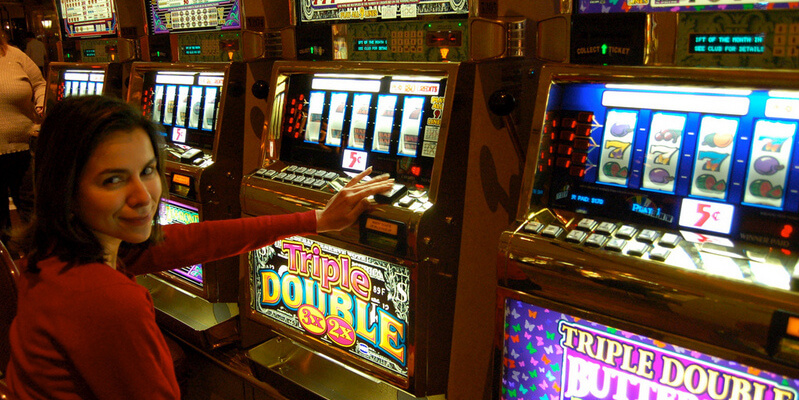
Back in the day, the very first slot was invented in 1891. It was a precursor to slot machines rather than one itself. It was invented in Brooklyn, New York and displayed 50 card faces based on poker.
Inserting a nickel and pulling the lever would make the drums spin, and hopefully come up with a good poker hand. They became very popular in bars across the city. There wasn’t any kind of direct payout mechanism, so your poker hand was worth whatever the bar staff decided it was. Maybe a pair of kings would get you a free drink, but a royal flush could get you free cigars or a whole round for your friends too.The odds could be rearranged to reduce the chance of winning even further though.
So, this poker slot wasn’t the ideal game. It was also incredibly hard, without the contemporary technology, to standardise prizes: there were so many different possible poker combinations that an automatic payout was practically impossible. Luckily, a new game wasn’t far away.
The Liberty Bell slot machine had a much simpler design – and that meant it could even generate automatic payouts.
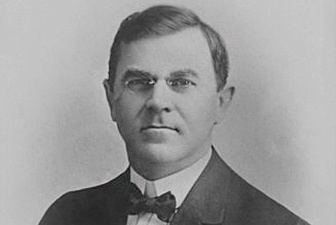
Charles Fey invented the Liberty Bell and, though its exact age is unknown, it was the first proper slot. There were three spinning reels, and five different symbols available: horseshoes, hearts, spades, diamonds, and a Liberty Bell. There were only three reels rather than five drums, so it was much less complex to work out the payouts.
Three Liberty Bells yielded the biggest jackpot: a mere 10x your bet. By modern standards, this is nothing to shout about – but if each pull only costs you 5 cents a go, then you’d probably be happy with a 50-cent payout
This is the slot machine that spawned an empire. Liberty Bell became the de facto name in slot machines. But he couldn’t keep up with production, as demand outstripped his means.
In 1907 a different slot machine was produced in Chicago, known as Operator Bell – and by 1908, bars all over the USA had their own versions of Fey’s famous machine. A nickel in 1908 is worth $1.25 in 2017’s money – so apparently, people all across the country were really eager to try and win that amazing $12.50 jackpot.
The spread of slots
It’s easy to forget just how humble slot machines’ beginnings were. They were used for all kinds of different purposes through the years, including:
- Business builders in shops. These slot machines were ways for people to amuse themselves, and often offered other prizes such as golf balls or chewing gum.
- Clockwork wonders, showing off the cutting edge of mechanical technology.
- Cheap ways to keep people occupied in casinos. In the early days of slots, only table games were considered ‘real gambling’ – so spouses and friends could entertain themselves with slot machines while their loved one tried to cash out playing poker.
- New mobile slots, which combine different technologies to create a more immersive experience. High definition graphics, surround sound, animation, film clips and even vibration can give slot machines a whole new lease of life.
If you want to get some perspective, think about the ways that they grew. Only a hundred years ago, slot machines were still just oddities. Now, they’re practically ubiquitous – and big money earners for the companies behind them.
- Australian slot machines, known colloquially as ‘pokies’ and officially as ‘gaming machines’, are available in all major casinos. They also show up in many pubs or sports clubs. In 2013, there were 198,418 land-based slot machines – and 95,000 of these were in New South Wales.
- The USA had more than 889,000 slot machines in 2013 – that’s 2.8 machines per 1,000 citizens. 181,000 of there were in Nevada, which means there was 1 machine for every 15 residents!
- Over 70 percent of US casino revenue comes from slots. In some states, this rises to 80 or even 90 percent of earnings.
- There’s more than 4.5 million gaming machines in Japan, even though gambling is strictly illegal there. Pachinko and pachislot games aren’t considered gambling, as you can only win prizes and merchandise – but these are later exchanged for money at a different place, giving the rules a legal loophole.
- Online casinos and mobile slots have an even larger audience share. Tens of millions of people play slots. You can pay through websites, or even indulge in mobile slots paid by phone bill.
Slots and house edge
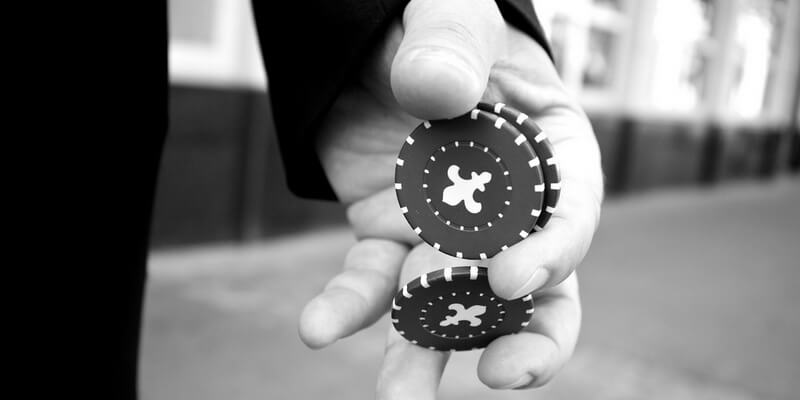
So, it’s easy to see that slot machines are incredibly popular – even though, on the face of it, they are not a good investment.
Many casino gamers decide which games to play based on their house edge. This is the amount of money an average player can expect to lose.
Games with higher house edges are designed to bring the house more money and give less back to the gamer. However, house edges are worked out as an average over many thousands or millions of transactions, and statistics don’t guarantee what will happen. That’s how you can end up getting long streaks of one colour on the roulette wheel despite the fact it’s roughly a 50-50 chance red or black: statistics merely represent the trends of the whole data, and your experiences are only a tiny fraction of a much bigger set.
Slot machines tend to have a higher house edge the lower the minimum bet is. Games that only cost a penny to play might have an 84 to 87 percent return to player (RTP). For every pound that you wager, you’ll get 84 to 87 pence back. This results in a house edge of 13 to 16 percent.
The lower the house edge is, the higher the expected return to player.
Games where bets cost 5 pence have a house edge of approximately 10 to 12 percent, while 25p games might have an edge of 7 to 10 percent. Once your minimum bet level is in the pound denominations, house edge often decreases accordingly.
Many slot machines offer a RTP rate of between 93 and 95 percent, with the casino expecting to keep 5 to 7 percent of what you pay in. That’s a similar pay level to American roulette, where the 0 and 00 spaces mean that house edge comes in at 5.26 percent.
However, RTP isn’t the whole story. Some slots have higher volatility than others – which means the payback percentage is worked out by dividing the potentially huge wins by how likely they are to come up. These slots may still have a RTP rate of 95 percent, but that’s because of occasional massive wins rather than frequent small ones.
You can also find slots with variable payback rates. They’ll be advertised with more than one RTP – perhaps as 92% | 94% | 96%. These games have a lower RTP rate the smaller your bet is. As you make larger bets, the house edge decreases. Therefore, the more you bet, the more likely you are to see big rewards across the board.
The top tier is reserved for players betting the maximum amount per spin, and on all paylines. Even if the chance to win doesn’t change much, casinos can still extract more money from players based on their perception that more money will bump up their odds of winning.
In reality, an RTP of 92 percent is very similar to a RTP of 96 percent. You’d have to be playing for a long time, with large sums of money, to see any real difference – but for those who are really dedicated, this little change could result in big payoffs.
The place of Video slots in the History of slots
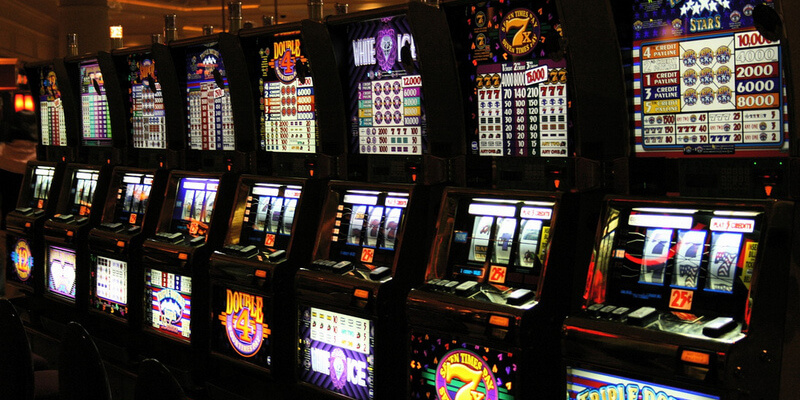
The initial mechanical slots did well. Les Vegas floors were full of them, and they created a decent amount of money. But companies were always looking for ways to create more innovative and effective slot machines.
In 1963, the first electromechanical slot game started appearing. It was called Money Honey, and it was a moderate success. Its core invention was automated payout: it could pay out 500 coins without any human aid. This, alongside a practically bottomless hopper, made it a precursor to the technologically advanced slots we know and love today.
1976 saw the first ‘real’ video slot machine, made by Fortune Coin Company. It had a modified 19-inch TV screen for the display, and the machines had a trial run in the Las Vegas Hilton Hotel. They needed some cheat-proofing.
But, after the modifications, they became the first video slots approved by the Nevada State Gaming Commission. Fortune Coin Co. and their technology were bought in 1978 by IGT. And by 1981, slots generated 44 percent of Nevada’s gaming revenue – up from 36 percent in 1971.
However, video slots were still in their infancy. They just came up with a random combination of symbols instead of having any animation to it. What’s more, the games had the same limitations as mechanical reels. The number of symbols determined jackpots you could pull, and the number of reels. Players assumed jackpots would have 10 to 15 symbols at most – so you’d need more reels to increase the odds, but more reels on a slot meant players were more aware of the impossibility of it. Trying to line up seven bells or cherries, after all, seems much tougher than lining up four or five.
The other alternative – of having many symbols – would make it almost impossible to even win small or moderate payouts. Thus, these video games were more of a distraction – and players (and businesses) still lavished the most attention on classic mechanical slots.
Video slots didn’t become incredibly popular until the 1980s. A Norwegian mathematician, Inge Telnaes, figured out a way around the reel and symbol problem: what if numbers were assigned randomly, rather than corresponding to actual fixed reels?
A random number generator could decide what symbols showed up where, and then probabilities and jackpots could be arranged around that. It was easy to set different symbols to be worth different amounts – and then make them rare. Suddenly developers could offer incredible odds on jackpots.
A jackpot could pay out a million coins, just as long as the chance for that happening was set low enough. His patent was for virtual reels, with the chance of different things happening determined by random number generation.
The virtual reel patent was granted in 1984, with IGT purchasing it in 1989. The company started to use it in their video slot machines, and they received a hefty sum of royalties as competitors started to use the same technique. Fast forward to 1990, and slot machines brought in a full two-thirds of Las Vegas’ gaming revenue.
There was also a shift in adding bonus rounds to slot machines. These extra additions can help make slots more appealing. While they seem ubiquitous now, bonus rounds were a complete revelation when they first appeared.
Five reel slots, video clips and bonus events all had some impact on contemporary games. Even though some of these features only debuted around 2000 – years into the video slot machine’s life – these comparatively modern features have still been around for two decades.
Once games became this digitised, it was easier to distribute them across other formats. You could never have had a mechanical slot machine on the internet, but it was easy to create online casinos. Software for slots games could easily be changed and altered to offer the same game on different platforms.
So, the same title could be available as a land-based slot game, an online casino slot, and as a mobile billing slot. Players with favourite titles could now enjoy these games from the comfort of their own home.
Most countries have embraced video slots, and computerized slots with mechanical reels have fallen out of popularity. Even in the USA – the home of mechanical and video slots games – more than 80 percent of casino floor games are video slots.
And that’s not counting all the online and mobile video slot titles which players consume.
Technological advances

Many table games have remained the same since they were first brought into casinos.
You still play blackjack with a deck of cards and offer the same odds.
You still spin a wheel in roulette and place bets (which have their original French names).
You can still play poker the same way, even if rules have changed to stay popular with the times.
Yet slot games from twenty years ago look very different to the way they look now. Technology has been marching on – and that’s influenced how the slots look, work and play. Here’s a look at all the technology which has helped slots become the world’s favourite way to game.
Coin hopper
The coin hopper refers to a device in the machine that holds coins. All the coins here can be used immediately for payouts.
When the player collects their winnings by pressing ‘cash out’, the container will rotate and dispense winnings to the lucky player.
• Slot machines had originally used coin tubes. You had to stack coins inside these, as they were rigid and static.
• Space constraints meant that there might not be room for many coin tubes in a machine. Consequently, a limited number of coins could be cashed out before an attendant had to refill the tubes.
• The Money Honey slot, first produced in 1963, allowed slots to circulate coins. There was a large pool available to draw from, rather than just a stack of coins.
• Payouts could be much bigger – up to 500 coins at a time. As advances got even bigger, this went up to 1,000 or more coins at a time.
• As a result, designers could make games with larger payouts or more frequent wins, as there was no longer a physical limitation on dispensing winnings.
• The introduction of online games has eliminated this problem for virtual players. Playing mobile slots in the UK is a long way removed from worrying about coin jams or waiting on attendants.
Bill validator
Slots before the 1990s felt like playing an arcade game. Players had to insert their money manually. So, if you wanted to play with £20 worth of credit, you’d have to put that all in yourself – in whatever denomination the slot machine was set up to read.
• The bill validator appeared in the 1990s, and was the same kind of thing you see today in self-service check-out machines.
• It reads the note you put in, and automatically converts it to credits which you can use in the machine.
• Modern casino bill validators scan bar-coded tickets as well as the currency. This makes them more flexible, so they can rapidly recognize different denominations as well as identify counterfeit notes.
• Some validators are programmable to read different currencies entirely, letting a manufacturer fit machines with a global validator. This can then be changed in each individual country to identify their money.
Ticket printers
As mentioned above, many casinos introduced ticket printers with barcodes on. They started becoming popular in the late 1990s. Instead of paying out money (in notes or coins), machines instead started printing out tickets that acted as vouchers.
• While the coin hoppers were revolutionary, the tickets made them obsolete. You didn’t have to wait for an attendant to clear out a coin jam or refill a machine when it ran out of coins. Instead, you could simply print out a piece of paper.
• The ticket can be redeemed at a kiosk or with a cashier, if you want to pay out and get physical cash.
• Alternatively, you can redeem the ticket at a different slot machine and transfer your credits to another game.
• Multiline games with small coin sizes didn’t exist until the ticket printers came about. Small coins caused frequent hopper jams, so you couldn’t easily bet on penny slots. Introducing cash-out tickets eliminated that problem – you could just print a voucher with the equivalent win on instead.
• Printers can also create coupons or vouchers alongside the payout slips. This allows them to double up as promotional devices.
• Casinos no longer had to keep huge amounts of money in coins, so it was more convenient and more secure.
Multi-game machines
Some terminals are multi-operational. The same physical device stores the information for several different games. This could be several different slots titles, or even different games entirely like video poker or virtual blackjack.
• The first multi-game machine was the Game Maker in 1994. It included slot, video poker and video blackjack choices, so patrons could pick what game they wanted to play.
• Game Maker machines got something of a cult following, which was a rarity for the time.
• It was an example of video slot games really appealing to a large audience, and so became a great blueprint for other developers to follow.
• Later multi-game machines include IGT’s GameKing, which capitalized on the Game Maker’s initial appeal.
Slot bonus wheels
Bonuses are big business, as companies compete to see who can come up with the best kind of extra. One of the most eye-catching bonuses is the wheel. This sits atop many land-based casino slot games, and towers over the other machines.
• Games like Wheel of Fortune – based on the TV show of the same name – helped popularize this mechanic.
• When players activated a bonus round, the wheel on top of the game would spin.
• In the beginning, these games were incredible novelties. A sound would signal the upcoming spin on the wheel, and all the nearby players on the casino floor would look up to see what level of bonus the player won.
• While Wheel of Fortune’s digital slot (where you pay by mobile) doesn’t have the same attention-grabbing appearance, they are still very popular thanks to the bonus wheel game.
Virtual reels
As mentioned earlier, virtual reels (and the transition to video slots) were part of what made casino games so popular. Thanks to Inge Telnaes, it became possible to map symbols onto a virtual reel rather than have them on a physical one. This was, quite literally, a gamechanger:
• It enabled huge jackpots, as the odds could be changed. You no longer need hundreds of symbols or reels to be able to offer big money prizes.
• The mechanical and electromechanical slots relied on having large reels with many different symbols on. However, the size of the machine’s casing limited the size of the reels – so you could only increase them a certain amount. There was a very solid upper limit.
• Telnaes’ virtual reels let game developers view the reel in a different light. You could have a reel with two regular symbols and one jackpot symbol on it, but program the numbers so the jackpot only came up one spin in twenty. This means the game is still random, but there don’t have to be twenty different symbols on the reels.
• It became possible to create more flexible slots, too: high and low volatility slots would be impossible without this innovation.
• IGT’s famous Megabucks games also wouldn’t be possible without this innovation. It really has shaped how contemporary slots work.
Progressive games
Progressive slots are a popular choice in land-based casinos, or when playing mobile slots for real money. Every spin adds some of the wager to the jackpot.
If you don’t win the jackpot, your money gets added to the total prize fund – and if you do win it, then it’ll reset to a certain level and keep growing as people try to win it.
• Initially progressives were just limited to a single machine, so you’d get back money that had been paid into one game.
• Linked progressives improved on this: they electronically linked together multiple games in a specific casino, so they all shared one huge pool of winnings.
• The most extreme version of this is wide-area progressive games, like IGT’s Megabucks which launched in 1986. This linked together machines all over Las Vegas, as well as the state.
• Megabucks holds the world record for the biggest jackpot: $39 million, won in 2003.
• Multi-tiered progressive machines allow players to enjoy games and still get reasonable wins, even if they didn’t walk away with the top money.
• Mini jackpots might start at £5 or £10, with the next level beginning at £50, a third level of around £500 and a grand payout of £2,500 or above. These might be awarded in conjunction with a much bigger progressive jackpot.
• Multi-tiered progressives are more focused on the low volatility end of the market – giving out small rewards much more frequently, but retaining the excitement of elusive jackpots.
Why are slots so popular?
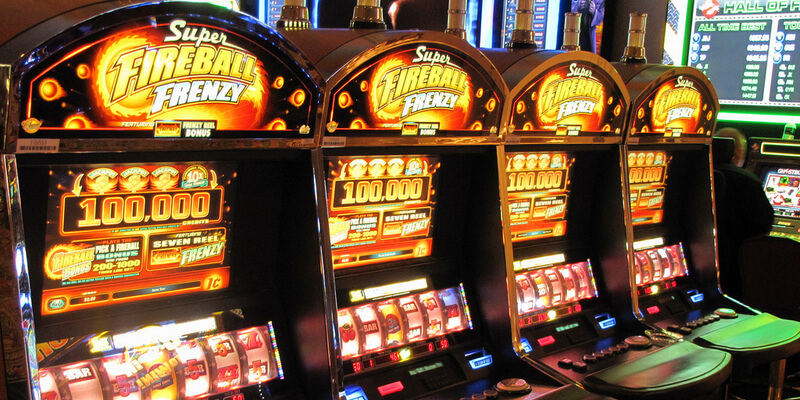
You may have read all this information, the history of slots and their evolutions, and still not have had this question answered. Why exactly are slot machines so popular? This isn’t just upright machines in casinos either – it’s also online casinos, mobile slot games, and even Facebook-friendly slot-style games that reward you with in-game currency rather than money. So, what’s behind all this incredible growth?
There’s a few key points here.
Firstly, slot machines are easy to play. There’s no learning curve involved, like in a table game. You don’t have to memorise a blackjack chart, or learn to read body language like a poker pro. You don’t even have to learn all the different kinds of bets that can be placed on a roulette table.
Every slot machine you come across will be self-explanatory.
You insert money, choose the number of paylines you want to play on (if the option exists to change it), and hit ‘spin’. Nothing could be simpler. There’s nobody to criticise you for making a mistake, and no complicated strategies to try and keep in mind – it’s just you and the slot machine.
Then, there’s the risk/reward factor. If you play roulette, you could put £1 on your number coming up and potentially win £35. But when look at the roulette wheel spinning, we know that’s pretty unlikely. And what’s more, the potential pay-out isn’t even that great.
On the other hand, you have the chance to win huge money in slot machines off a very small wager. Symbols often pay hundreds or even thousands of times your line wager, and some machines offer progressive jackpots.
We’ve heard tales of people winning £1 million on the slots from just a £1 bet. The biggest payout ever was $39.7 million in Las Vegas. This was paid out in 2003, to someone who had made a $3 bet. And if it’s happened to someone else, then humans are naturally incline to wonder if it can happen to them, too. These stories help mythologise slots and add to their unique appeal.
Minimum bets on slot machines can also be the ideal solution to a penny-pinching economy. Slots can often start as low as a penny per line, so even playing every line on a slot might only cost 50p. That’s much less than the minimum bets on table games, which often start off as pounds or more.
Some progressive slots mandate that only maximum bettors can win the progressive jackpot – but regular machines can be generous too. While you only win in multiples of whatever you bet, there’s something cool about betting 30 pence and getting a whole £30 back.
Playing slot machines is also incredibly rapid. You can sink more money into slots, if that’s what you feel like, because the trade-off will be getting more chances to win.
At a full blackjack table, you might be able to make 50 or 60 wagers every hour – and that’s if play is happening at a rapid pace. If it’s just you and the dealer, that could go up to 100 or even 200 wagers per hour (though we admit that would involve playing a complete game every 20 seconds).
Slot machines are much more fast-paced. If you’re feeling determined, you could bet maybe 500 times per hour. This gets harder when you win and the reels freeze in place, or when you trigger bonus events and there’s a long transitional sequence.
But regardless, the possibility remains. 500 shots at a progressive jackpot might well tempt you more than playing endless hands of blackjack for a 3-to-2 payout at best.
Finally, there’s the most obvious reason for playing slots: they’re fun! Video slots exist in a variety of different forms, and have beautiful artwork on their reels.
Symbols move and shake; grand music plays; and bonus features are plentiful. Whenever you win, your brain releases a hit of dopamine. That’s what makes you feel so good – and it’s why you’ll always be tempted to keep playing until you get another win, and another shot of the great chemical.
However, slots should still be fun even when you’re not winning. Game designers work hard to make sure that the slots you play have more than just a one-dimensional appeal.
The technical wizardry is there to keep you engrossed, even if you get into a losing streak. You’re always an active participant, whether you’re pulling a one-armed bandit or paying into prime slots on your mobile.
Immersion is the most important part of games for many designers; and if you feel like you’re losing track of time, then all the better.
Just make sure not to get too sucked in, and don’t overspend your bankroll.
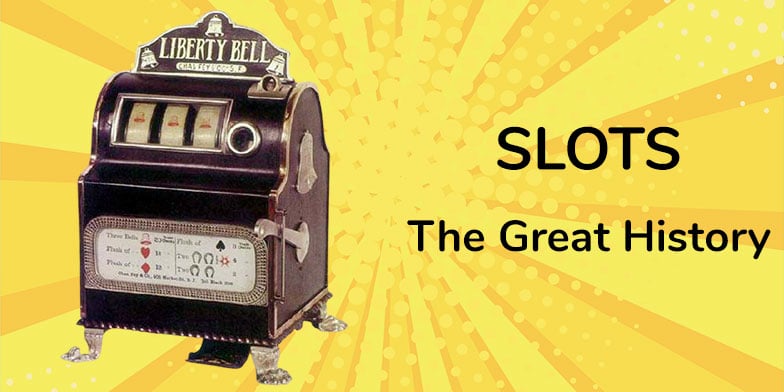






Leave a Reply